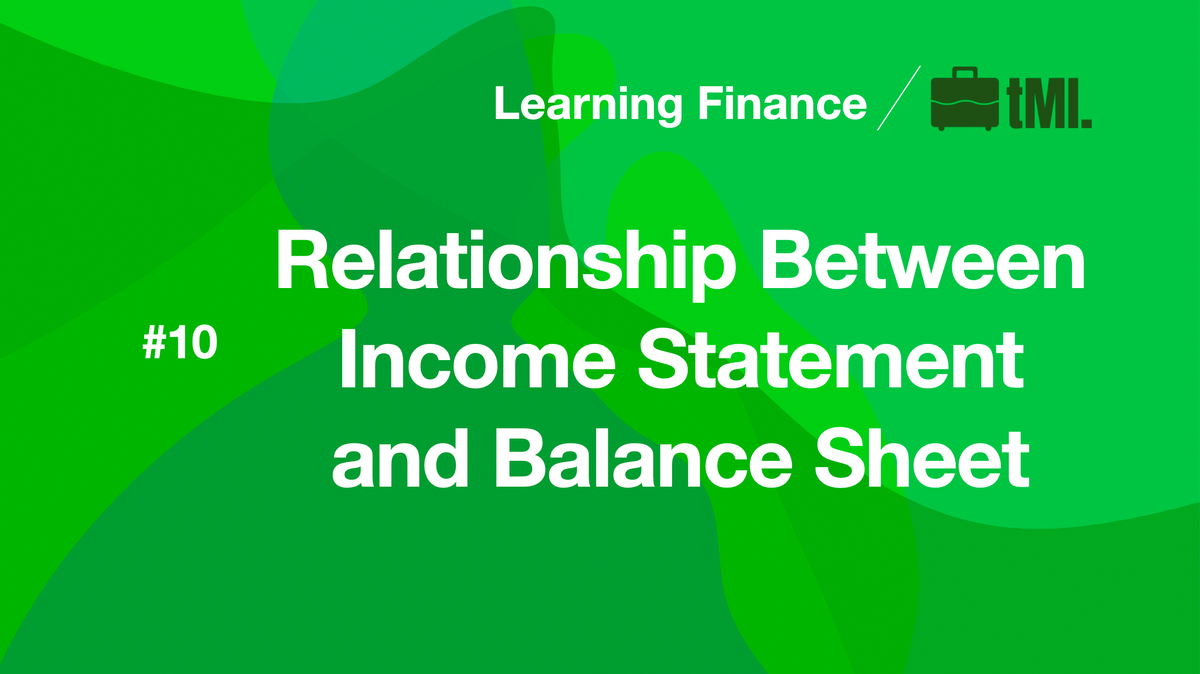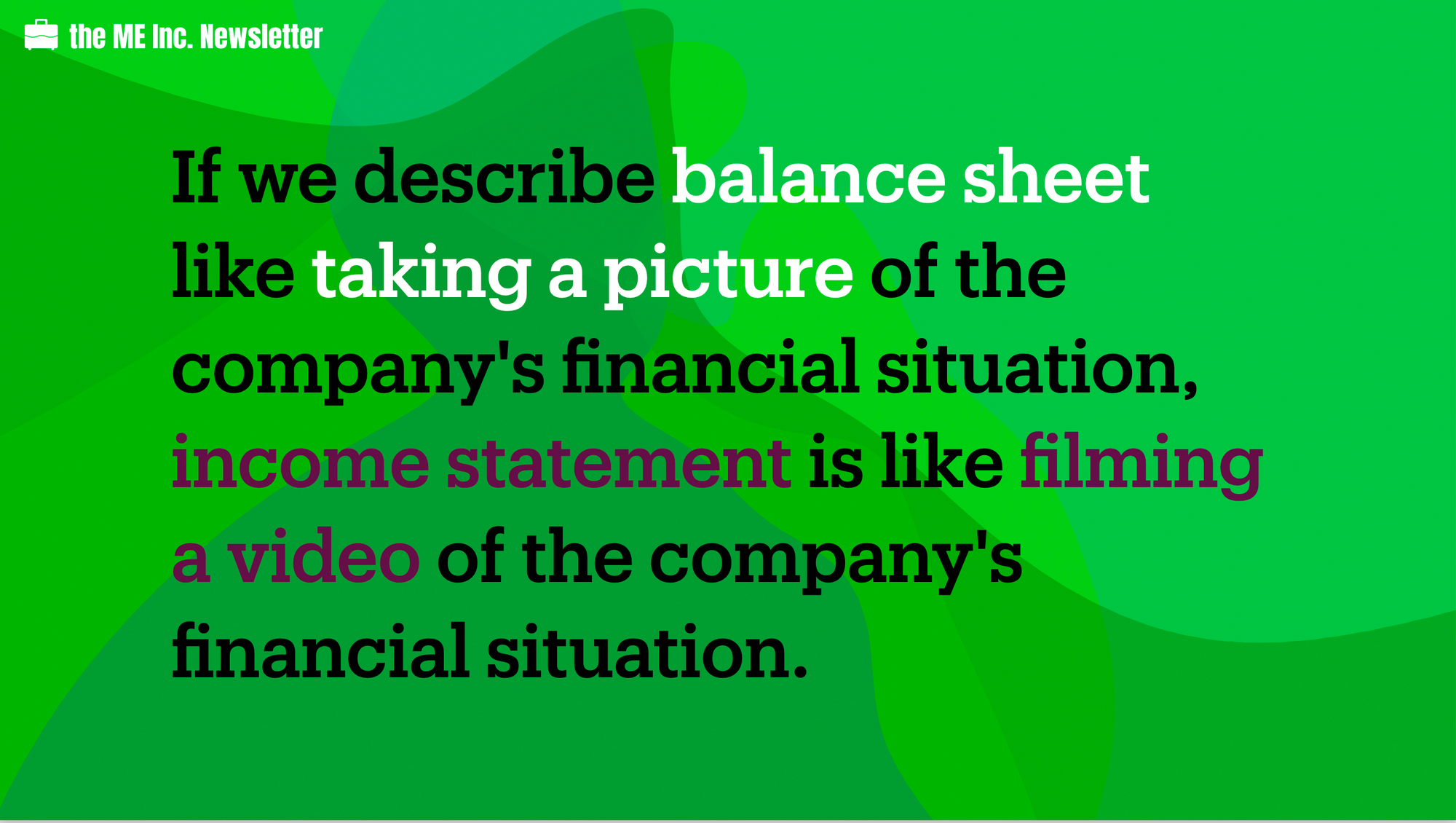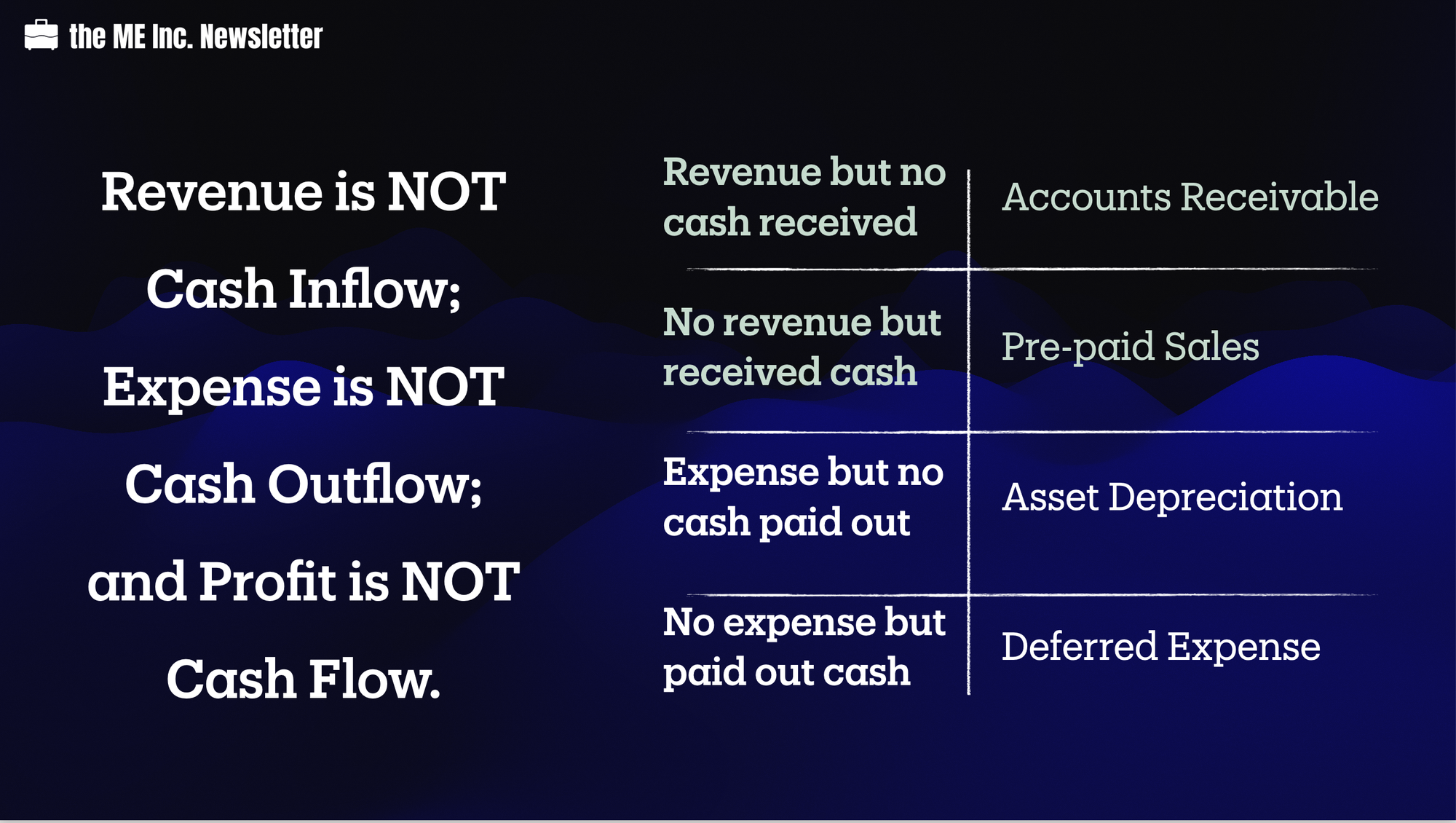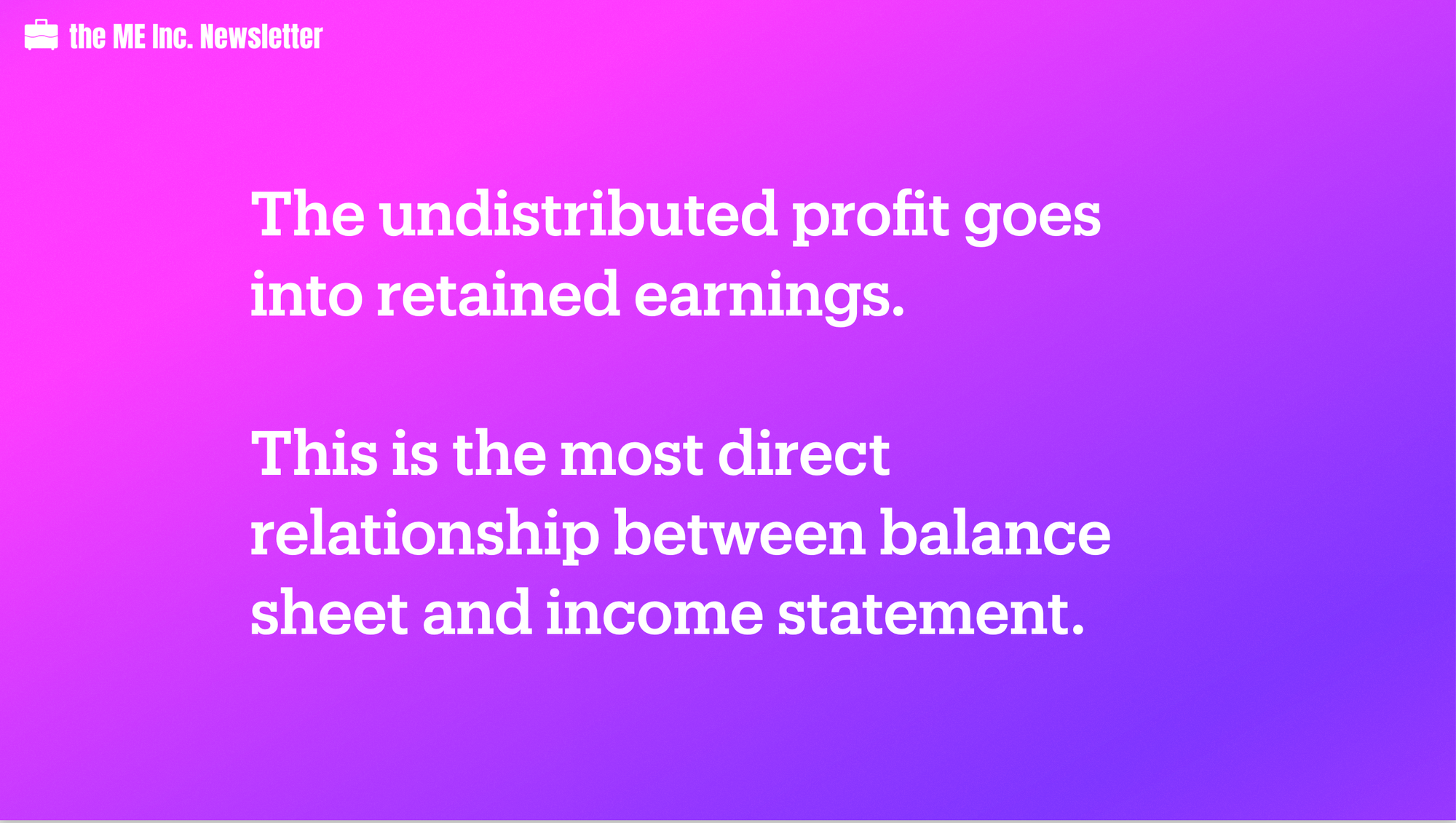Relationship Between Income Statement and Balance Sheet
The undistributed profit goes into retained earnings. This is the most direct relationship between income statement and balance sheet.

In the last post we talked about each item on the Income Statement. Let's dive a little deeper into how income statement works.

Income statement works just like a funnel
You put revenue in from the top of the funnel, and profit comes out from the bottom. In between the top and the bottom, costs and expenses will be taken out.
The sequence of taking out the costs and expenses is also pretty straightforward. First of all, we deduct the cost of goods sold from the revenue, the cost that is directly related to doing the sales. Doing so will gives us our gross profit. Then we need to subtract all kinds of expenses, some of which are related to doing the sales, and some to managing the company.
On the balance sheet, the fundamental logic is "asset equals liability plus equity".
What is the fundamental logic on the income statement?
Well it is actually quite simple: when we subtract all the costs and expenses from revenue, what's left is profit.
What information does the income statement tell us?
First, by looking at the net profit, we can conclude whether the company is profitable in the past fiscal year. If net profit is positive, the company is profitable; if net profit is negative, the company is not profitable.
But because income statement lists the company's operating profit separately from its non-operating profit, we can, to an extent, conclude how predictable the company's future profitability is.
Balance sheet shows a company's asset, liability and equity values at a certain time point. Different from the balance sheet, everything on the income statement is by a period. If we describe balance sheet like taking a picture of the company's financial situation, income statement is like filming a video for the company's financial situation.

Does revenue equal cash received?
There is still one important concept to clarify: does revenue equal cash received?
The answer is NO. Revenue does not equal cash received. And Expense/cost does not equal cash paid out.
First, let's look at the first statement - Revenue does not equal cash received.
Under what circumstance will we have revenue but do not receive cash? Well, you may have guessed it - when we make a sale on accounts receivable. Even though we have sold our product and got the revenue, we will NOT actually see any cash until the accounts receivable is collected.
On a second note, the reverse is also true: cash received does not equal revenue.
One possible situation is when we get pre-paid sales. We've sold the product but have not delivered yet, but have already received the money.
After that let's look at the second statement - Expense/cost does not equal cash paid out.
Under what circumstance will we have an expense but have not paid out cash?
One common example is asset depreciation. Depreciation is used to describe the decrease in value of fixed assets. When calculating depreciation, we don't need to pay cash to anybody, and it only shows on the books. We have to record such depreciation as an expense on the income statement, but we actually don't need to pay cash to anybody.
On the contrary, when do we have cash outflow but no expense?
When we pay a large sum of money for an asset that's for the future operations of the company all at once, that lump sum should NOT be accounted as expense for that period alone. Instead, if we think the asset can be used for a certain period, a portion of the total cost should be accounted each year. We've already visited this concept before in the balance sheet episode, and it is called deferred expense.

Relationship between balance sheet and income statement
Although individually, balance sheet and income statement have already provided us with lots of information on a company's financial performance, the combination can often reveal insights that far exceed an individual statement does.
Let's say if a company makes a net profit of 5.2 million dollars this year, and has decided to distribute 1 million in dividends to shareholders. The remaining profit is 4.2 million dollars.
This 4.2 million should go into our balance sheet to increase the retained earnings. In other words, it increases the value of shareholders' ownership rights.
This is the most direct relationship between balance sheet and income statement, and this relationship is connected by retained earnings.

Of course, later we will see another financial report cash flow. After we learn cash flow, we will find that the three financial reports make up an interesting combination. It will help us paint a full picture about the company's story.
